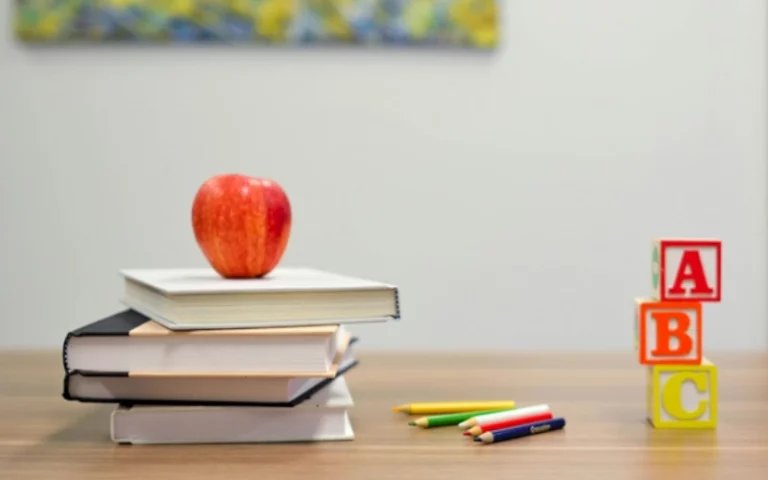Table of Contents
Recently, scholarly attention has been drawn to the trend of teaching children multiple languages. The question that emerges from such a trend is why it makes sense to encourage kids to learn a second language when they are still trying to master their primary language.
It seems like this may be a learning overload in a period when students are still learning to create friendship bonds, play, and count. However, evidence shows that the early years are when learning a second or subsequent language comes naturally. According to experts, during the ages between 0 and 3, the brains of young children are uniquely flexible and suited to learning multiple languages. Here are some notable reasons why you need to start teaching or exposing kids to second languages as early as possible.
1. Improved Memory Skills
Evidence shows that bilingually exposed infants excel in detecting language switching from as early as six months old. This means that kids can learn subsequent languages from as early as they start walking and learn the first language. In fact, evidence shows that 30% of kids aged under 6 years are now learning a second language.
Remember learning a second language will not negatively impact the child’s primary language. This information is important as learning a second language has been shown to boost memory skills. Students who understand multiple languages can also find it easy to work on academic assignment platforms like essayusa.com.
According to evidence, language acquisition affects neuroplasticity, which is the brain’s capacity to undergo structural adjustments as a response to stimulus. This means that certain cognitive demands and behavioral experiences can cause adjustments in the brain.
Research shows that learning a second language enhances neuroplasticity, suggesting that there is a link between language acquisition and improved brain function.
Please note that the human brain has capacity to store tons of information. At a young age, this capacity can increase based on the stimulus presented. Experts indicate, therefore, that learning a foreign language during a person’s formative years helps you build stronger neural connections between the right and left-brain hemispheres, resulting in improved memory skills. As your capacity to recall information increases, so will your ability to remember information and learn more efficiently.
2. Enhanced Understanding of Other Cultures
Learning a second or subsequent language is the most effective way for kids to improve their understanding of different cultures. Culture is intricately intertwined with language, meaning that there is no way to effectively learn a language without getting to know the cultural contexts within which certain words and phrases acquire meaning.
The main benefit of bilingualism is that you get to understand a different culture and improve your tolerance towards other cultures. Kids who learn second languages are more open to interacting with others and can easily explore diverse cultures. A second language also helps keep the child open-minded when dealing with other ethnicities and nationalities.
3. Improves Listening and Comprehension
Evidence also points to the fact that being familiar with more than one language will improve your listening skills. Kids have to be attentive and active to learn a second language effectively. The focus required for such tasks teaches proper listening that can be implemented elsewhere.
Kids who learn a second language listen with greater clarity and this makes it easier for them to focus during class and pay attention, such kids will be able to seek out key points during reading or conversations and understand more of what is being communicated.
4. A Second Language Enriches Vocabulary
Learning multiple languages means that you have several ways to articulate your points and an even richer vocabulary. Kids who master multiple languages have a greater ability to understand what they hear and say, and will have a larger selection on the language they can use to express themselves.
These children can communicate with greater fluency and get a better understanding of the world that surrounds them. So, give kids a chance to learn new words every day by exposing them to a second or subsequent language.
5. Teaches Social Skills
Evidence shows that learning a new language at home teaches kids to become better communicators. According to the research, children raised in multilingual environments have better ability to interpret speakers’ meaning compared to those exposed to only one language.
It should be noted that kids don’t have to be bilingual to benefit in terms of enhanced communication. Exposure to two or more languages benefits kids even if they do not become bilingual themselves. Most importantly, the researchers concluded that exposure to a second or subsequent language is crucial to building better social communication.
The point here is that kids in bilingual or multilingual environments have more extensive spaces for social practice. They have more opportunities to monitor who speaks to whom and in what ways. The environments also help kids to observe the social patterns and connections that form based on the language use.
These social-linguistic experiences are crucial in honing the kids’ skills and perspective that form the foundation for effective social communication.
Learning a second language benefits kids in multiple ways, including improving their ability to learn and expending their social opportunities. Knowing more than one language enhances the kids ability to understand the written word and communicate in multiple contexts.
They gain better cultural relativity and have better social skills. Their confidence also grows and they have a better capacity to memorize concepts and concentrate in class. To help your child acquire and master a second language, introduce the learning early on and create an environment that allows regular use and practice of the second language. Evidence shows that immersion is the most effective strategy for teaching a second or subsequent language.

Arslan Hussain, founder of The Different Languages, is an experienced translator passionate about languages and cultures. Through his website, he shares his knowledge and love for different languages, making learning accessible and enjoyable.




